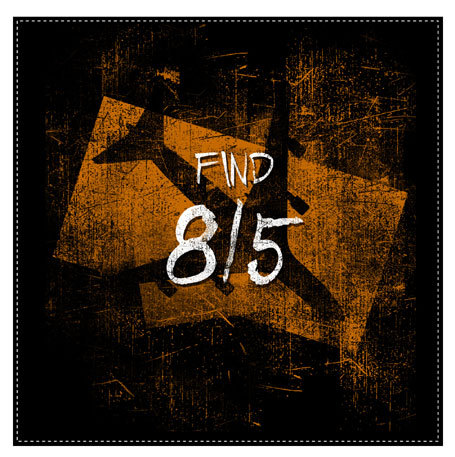
Technology and society: “Alternate reality” games mixing puzzles and plot lines, online and off, are becoming more popular
WHAT do you get when you combine technology, advertising and unconventional storytelling?
WHAT do you get when you combine technology, advertising and unconventional storytelling?
Scores of “Batman” fans roaming the streets of San Diego wearing Joker costumes and carrying smart-phones.
One of hundreds of alternate-reality games (ARGs) orchestrated for marketing purposes, this elaborate quest, staged at a comic-book convention in 2007, began with $1 bills that led players to a Joker-themed website.
The site, in turn, gave them a time and a set of satellite-positioning co-ordinates.
At the time and place specified, players found a plane writing a phone number in the sky.
Calling the number sent them on a scavenger hunt with online components.
.
And this massive cross-media event represented only one part of a game called “The Dark Knight”, put together by 42 Entertainment, an advertising company, to promote the film of the same name.
It may sound like a convoluted way to get the word out about a film, but games like these are becoming more widespread, attracting new players and bigger clients.
It was back in 2001 that the first commercial ARG, “The Beast”, a promotional campaign for Steven Spielberg’s film “A.I.: Artificial Intelligence”, began blurring the line between reality and fiction.
It was back in 2001 that the first commercial ARG, “The Beast”, a promotional campaign for Steven Spielberg’s film “A.I.: Artificial Intelligence”, began blurring the line between reality and fiction.
Instead of formally announcing the start of a game, ARGs merely leave clues for potential players to follow: a subtle image on a poster, perhaps, or a cryptic message on a website.
Fans must piece together the narrative—that’s the “alternate reality”—on their own. ARGs are characterised by their reliance on technology and teamwork, and are often shrouded in mystery until they end, weeks or even months later.
Only then is the full story (and the product being promoted) revealed.
Having started off as marketing tools for films and video games—as with “The Beast”, or “I Love Bees”, an ARG created to promote “Halo 2”, a video-game, in 2004—ARGs are now entering the mainstream.
Consider “The Lost Ring”, commissioned by McDonald’s for the 2008 Olympics.
Designed by Jane McGonigal, an ARG pioneer who used to work at 42 Entertainment, the game brought together players across six continents to uncover a story of amnesiac athletes and to recreate a supposedly lost (but actually fictional) ancient Olympic sport.
“Most people’s experience of the Olympics is vicarious,” says Ms McGonigal. “I wanted to give people a more social and active way to experience them.”
This ARG, linked to a global sporting event, sponsored by a multinational company and run in seven languages, shows how far ARGs have come.
As well as getting bigger, ARGs are becoming more ambitious.
With the Institute for the Future, a non-profit research organisation based in California, Ms McGonigal is using the ARG approach to evaluate future scenarios with the help of thousands of players.
In 2007’s “World Without Oil”, for example, players worked together to determine what humanity would do in a severe oil crisis. (Many of its conclusions were validated when the oil price spiked in 2008.)
Ms McGonigal’s latest project, “Superstruct”, uses blogs, videos and wikis to encourage people to imagine the world in 2019.
Her aim, she says, is to use such games as large-scale brainstorming tools, “to build our ability to respond quickly, and in large-scale collaborative ways, to what might happen in the future.”
Ms McGonigal does not consider these projects to be ARGs, strictly speaking, but they fit into the growing trend of using playful cross-media technologies to get people thinking, says Jonathan Waite of ARGNet (argn.com), a website that covers the field. In the past three or four years, he says, the number of ARGs going on at any one time has gone from a handful to around 30.
In September 2008 the British Red Cross launched “Traces of Hope”, the first ARG to be commissioned by a big charity.
With over 7,000 active players—ARGs almost always have a tight inner ring of dedicated fans who do the footwork, and a much wider circle of “lurkers” who simply watch the action unfold—this interactive narrative about a Ugandan teenager searching for his mother during a civil war was created to shape “the public’s perception of vulnerable people whose lives are affected by armed conflict,” says Dorothea Arndt of the Red Cross.
.
She says the campaign around the game reached over 30m people, allowing the Red Cross to contact new potential supporters.
.
Will other charities follow?
.
It is possible, Ms Arndt admits, that the campaign’s success was partly because of its novelty, so it may not be repeatable.
.
And how, exactly, does an elaborate cross-media game help to sell more hamburgers, or encourage more donations? McDonald’s, the Red Cross and other sponsors of ARGs are doing what Ms McGonigal calls “gift marketing”.
.
Instead of merely getting people to talk about a product, with a clever advertisement or a viral video, ARGs give sponsors the chance to “make something amazing, give it away, and then take credit for it,” she says.
.
As awareness of ARGs spreads, more companies are embracing the idea of advertising that is fun, not intrusive. “The Lost Ring”, says Mr Waite, had “such a cool story” that it may well have changed players’ attitudes towards McDonald’s.
.
What next?
.
Mr Waite says he has been excited by an ARG called “The New Frontiersman”, tied to the release of the “Watchmen” film on March 6th.
.
Ms McGonigal’s lips are sealed when it comes to her forthcoming games.
.
But with new ARGs starting up every week, now is a good time to start playing.
No comments:
Post a Comment